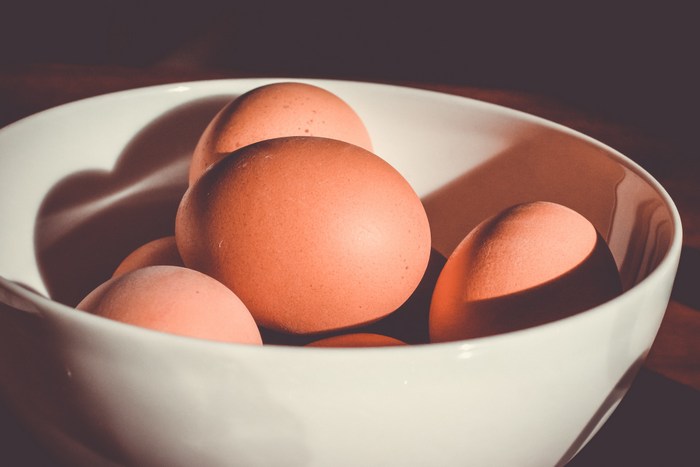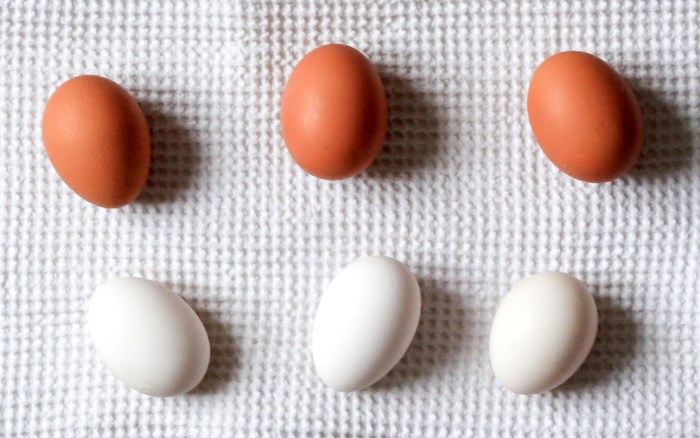Eggs from the grocery store are perfectly fine to use, but they have likely been sprayed with a disinfecting cleaner. Fresh eggs are optimum, but they usually have dirt, poo, or handling smudges. Any surface residue will interfere with the dye, so we want to remove this before working on the egg.

We are going to clean the surface gently with vinegar and water.
I do this at the kitchen sink. Use a plastic mixing bowl or container that is big enough to work in without crowding. Fill it about halfway with room temperature (not hot) tap water. Add about 1/2 cup of white vinegar (one cup of vinegar to 1 gallon of water). Prepare a soft drying pad area (paper or cloth towels) on the kitchen counter next to the sink.
Place the eggs into the vinegar water gently so they don’t roll against each other. You only need to leave them in for a short time. Do not leave them to soak, start bringing them out right away.
Lift an egg out of the vinegar water and gently rub it with a clean paper towel that has been immersed in the vinegar water. The paper towel should be soaking wet. Do not scrub. Just wipe it gently, turning it in your hand to get all sides, and dipping the paper towel frequently into the bowl of vinegar water.
When you have wiped off the entire egg, rinse it under cool running water to get all the vinegar off. If vinegar gathers under the egg when it is drying, it will etch the surface and make a weird patch when you dye it. So be sure and rinse the egg well. Pat the egg dry gently with a dry paper towel and set it on the drying pad to dry completely, while you clean the next egg. Turn the eggs over periodically and move them to dry spots on the paper towels so they don’t sit in dampness. Let the eggs come to room temperature before you start working on them.

You always want to work on room-temperature eggs. If they are cold from the refrigerator, condensation will form on the outside of the shell, they will be hard to draw on, and the wax won’t stick to the surface. You can leave the cleaned eggs out in their egg carton for several days before they even start to go bad. You can work on them for a week or more in this condition. Keeping them in a cool room will help them last longer, but don’t put them back in the refrigerator.
Note: If you are not able to finish your eggs within a week or two, and they start to smell, don’t toss them yet. I work on stinky eggs all the time. I just have to prepare myself when I empty them into the sink and rinse it down the drain quickly. Of course, if they start to seep fluid – it has been too long and you should discard them (in the outside trash bin). You don’t want to get anywhere near them when those babies blow!